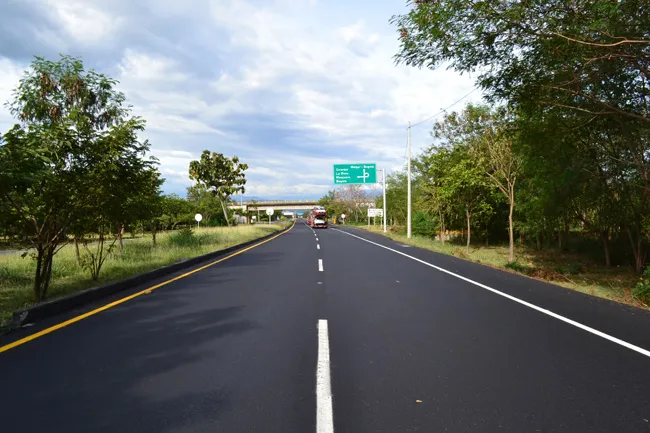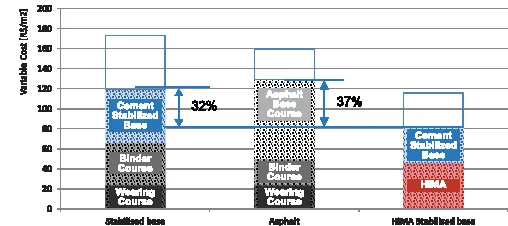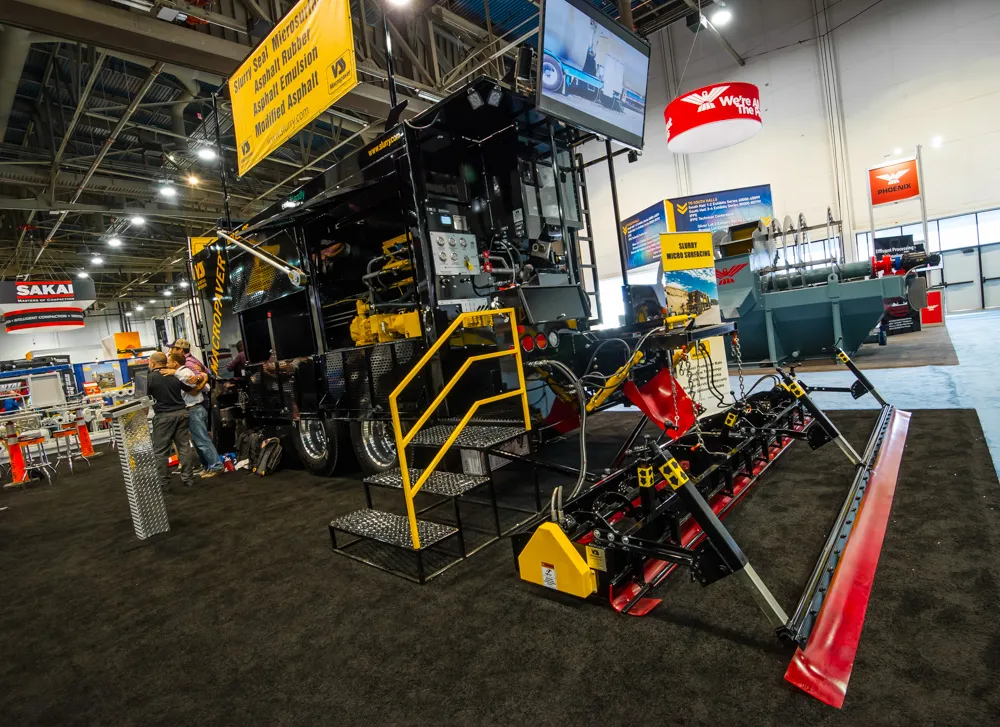
The use of bituminous slurry for road maintenance works in Colombia is taking a new step forward with the purchase of equipment from
The concession business San Rafael and the APP GICA project are both ongoing and are made up of four Colombian companies: infrastructure firm the Ethus Group; the construction company Colpatria; road specialist Mincivil; Latin American Construction. "This concessionaire was constituted to build the second road of the Girardot-Ibagué highway while the GICA APP was formed to develop the Ibagué-Cajamarca highway, both in dual-carriage APP mode," said Romero.
San Rafael is responsible for the construction and operation of the tolls to compensate for the investment in the Girardot-Ibagué highway. The concession period will be from 27-30 years, explained Romero.
He continued that the tolls from the San Rafael link will help to finance work on the second road project, which will from Ibagué to Cajamarca. However this second road link is immensely challenging due to the complexities posed by the local geography. The area in the vicinity of San Rafael is undulating, with altitudes varying from 350m to 1,300m above sea level. While the road link will be just 50km long it will have a total of up to 20km of road tunnels as well as numerous bridges. “It is tremendously complex work," Romero said.
Romero explained that there is a stretch from Ibagué to Cajamarca that requires major improvements and will be upgraded to dual carriageway status. He added that the 62km Girardot-Ibagué section of the route has already been converted to a dual carriageway and is the stretch currently being managed by San Rafael.
One of the reasons San Rafael used to select microsurfacing as a maintenance solution was the high volume of road traffic on the route. The road handles up to16,000 vehicles/day, of which some 7,000 are heavy trucks. "For maintenance we take into account two premises: first, that the driver is affected as little as possible. That's why we are milling and placing pavement in tandem, without leaving gaps or cracks after milling.”
Romero explained that he was introduced to the technique of microsurfacing on road pavement by VSS Macropaver. "This is a machine that makes bituminous slurries of very good quality quickly.” He added that the speed of application and the minimal curing time also helps allow the road to be returned to use quickly, minimising disturbance for vehicle traffic.
With this maintenance approach, the company can carry out effective and long-lasting repairs, as well as painting in the markings immediately afterwards. "The road looks as if it has just been finished. We do maintenance and paint at night. Once the emulsion has settled, usually after 3 to 4 hours, we can paint."
In general, the process involves carrying out work on a 1km stretch. The emulsion is then applied in three phases. Romero said, "The sections are painted at night and in one day we do 3-4km.”
As the road is a dual carriageway, traffic is directed temporarily over to the other side of the route and Romero said, “The users have hardly any delays.”
He continued, “We get a road that’s very well maintained and signposted.” And he added that drivers have a very good perception of the service as a result.
One of the key advantages of the concession holder owning its macropaving unit is the versatility that this offers. Romero explained, “When we hire in a subcontractor, they are working multiple contracts and they have waiting lists. By having our own team, we can carry out maintenance continuously and focus attention on the work, guaranteeing quality. When a contractor is hired to do 200,000m2, he wants to do them quickly while our focus is on quality for the user.”
However, as the concession company has its own macropaver, it can schedule the maintenance work with its own trained team when the traffic flow will be at its lowest, so as to minimise this disruption. Romero said, “It is a big advantage.”
Romero also highlighted that it is the speed of response that is the main advantage of owning the equipment. If a section of road is identified as being in need of repair, the firm can tackle this issue much more quickly than if it has to call on a subcontractor to carry out the work.
Rain is another critical factor in road maintenance and a frequent issue in this area of Colombia. Romero said that during daytime, the firm carries out as much maintenance work as it can. When rain falls, the firm is able to reschedule the use of its macropaver, something that wouldn't be so easy if it was hiring in a subcontractor to do the work. Romero said, “This can be achieved only if we own the truck."
Romero says that as long as the road structure is good, the slurry can last up to three to five years. "We have 800,000m2. We must perform a monthly maintenance of 18,000m2 to be able to turn around in a three-year cycle. That's another advantage of having the team."
The microsurfacing work is carried out using a suitable formulation of bituminous slurry. Macropaving technology was introduced to Colombia by MPI, which has continued to lead the field in the country. San Rafael established a partnership with MPI for the slurry supply. "We have aggregate process facilities, so we send sand samples and they design the mix, advising us on the formulation process," Romero explained.
MPI carried out extensive studies to analyse the grade of the sand, requiring a minimum quality in terms of granulometry and making adjustments to the formulation as necessary.
"We carry out this process continuously so the road looks new," Romero said.
San Rafael sent an experienced driver to the road sections where MPI was working for training purposes. This helped lower the learning curve with regard to application technique and operating speed. VSS Macropaver’s distributor in Colombia, Rodríguez & Londoño, also taught the operator how best to maintain and service the machine.
The success that San Rafael has had running its own VSS Macropaver in terms of productivity and versatility, as well as road surface quality, has also prompted the company to replicate this operation on other roads it holds the concession for. Romero said, "We have realised the advantage of owning the equipment."









